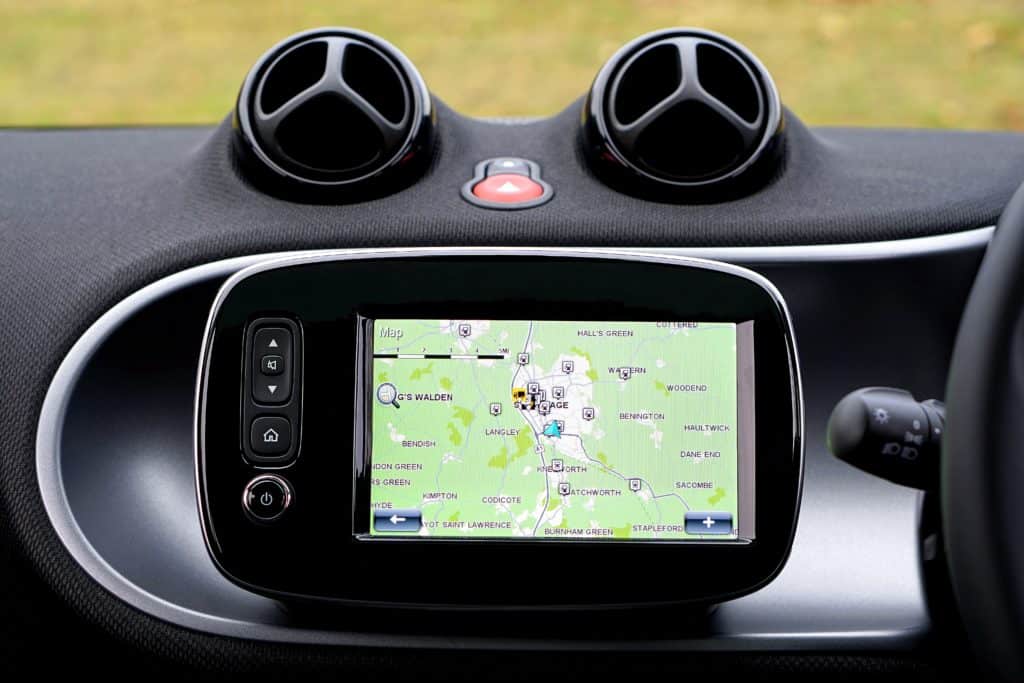Owning a car is one of the most expensive things you can do. Between the cost of buying the vehicle, paying for insurance, repairs, gas, and maintenance, it can be one of the biggest expenses in your monthly budget aside from rent or your mortgage. Here are 20 tips and tricks to cutting down those expenses that will add up to thousands of dollars in savings.

20. Shop For a Vehicle in December or January
If you are planning to buy a new car, make sure to get the timing right. Just like apartments and houses, most people want to go looking at new cars in the spring and summer. Whether you’re buying a new or used car, the best months to shop are actually in December and January. With snow and ice on the roads, no one is thinking about going on a road trip. Most people are also strapped for cash around the holidays. Very few people are actually in the market to buy a new car in the winter, and salesmen are eager to sell cars at a discount in order to pay the bills.
Car dealerships also need to make space in their showroom when the new car models arrive in January, which means the rest of the older cars go on sale. During these two months, it’s possible to buy a brand new car of last year’s model for thousands of dollars off the list price. Used cars are also cheaper than normal. On average, this strategy saves 7.7%. On a $30,000 car, that is a savings of $2,310. Just remember to bundle up with a warm jacket and gloves before you go.

19. Never Buy A Brand New Car
If you got a new job or a pay raise, you might be tempted to go out and buy your dream car. Treating yourself to a new ride seems like an ultimate symbol that you have “made it” in life, but in reality, it is a huge waste of money to buy a brand new car. On average, new cars lose 20% of their total value the moment anyone becomes its owner. So, if you buy a $30,000 car, it’s only worth $24,000 by the time you drive it home. So few buyers realize this fact, and it is very literally like burning thousands of dollars in a bonfire.
A life hack to getting a nearly-new car for a great price is to buy a previously leased or rented vehicle when it is one or two years old. Most car dealerships require the people who lease their cars to keep it under 12,000 miles per year. They are also under contract to keep the car in near-mint condition, if they want to avoid paying for repairs. The next time you visit your local dealership, ask if there are any cars in stock that are former lease models. You can buy a like-new car that is still under warranty for 5 to 10 thousands of dollars less than the original price.

18. Shop Around For Car Insurance
Most people choose to keep the car insurance their parents signed them up for when they were first learning how to drive, or they just pick a company based on a commercial they see on TV. Taking just a few minutes to get some car insurance quotes at competing companies can save you hundreds of dollars per year.
The cost of car insurance is calculated by your personal information like your driving history, age, and level of education. But some car companies charge their customers for the cost of their company’s advertising budget. We don’t want to call out any company by name, but if you have seen a multi-million dollar super bowl commercial for car insurance, just know that the customers were paying for that out of their monthly premiums. While these ads might be funny, it doesn’t help give you better coverage. Switching to a no-frills car insurance companies like Clearcover can save you 30 to 40% on average. Let’s do some quick math. Let’s just say you saved $300 per year by switching your car insurance. Multiply that by 5 years, and that’s already an overall savings of $1,500 just by making a phone call.

17. Do Your Own Repairs
For a lot of people, fixing their own car seems like something that they would never want to attempt. So much can go wrong, so it is understandable why most people drive their car to a mechanic right away. However, you never know until you try…Or, at least check a YouTube tutorial, first. You can also buy a Hanes manual on Amazon for your particular make and model, and the book will give an in-depth guide on how to fix most things that will go wrong. There are plenty of small fixes that the majority of people can handle on their own, and it can save you hundreds of dollars. At the very least, learning more about the mechanical side of car care can give you solutions to put a bandaid on a problem until your next paycheck comes along, and you can take it in to a professional. If you actually do managed to fix a problem on your own, it can be a very empowering experience.
Also, don’t be afraid to ask your dad, uncle, or handy friend if they know anything about fixing cars. You might be able to use your own skills as a favor for them in return for free or discounted service.

16. Pick A Car With A Long Lifespan
Every car engine has an expected lifespan. Obviously, taking in your car for regular maintenance and driving smoothly will prolong the life of your vehicle. But the year, make and model should give you an idea on how long you can keep that car in your life before it is too far gone to drive anymore. They say that Japanese cars tend to last well beyond 200,000 miles, and an average of 12.8 years. American cars, on the other hand, may only last 11 years. If you really love a car, it’s possible to swap out an engine and keep driving it forever, which is the case with many classic cars on the road today. However, most people will be ready to swap for a new one once their engine bit the dust, so keep in mind that buying a long-lasting car will save you thousands of dollars overall.
If you need help finding a car, Forbes has a list of cars that are expected to last for more than 250,000 miles. Most car loans take 5 years to pay off in full. If you keep a car for 10 years, that’s 5 years where you don’t have to worry about a monthly car payment. But if you find a car that dies within 6 years of owning it, that’s only one year of relief in your budget.

15. Go to a Car Auction
When a car is damaged in an accident, some people choose to exchange it for a check from their insurance company. They turn around and sell those cars at an auction so they can recoup whatever they can from the money they just paid out to the customer. Most independently owned car dealers will go to these car auctions and buy whatever vehicles they feel confident they can fix and re-sell to other people.
Copart is one of the biggest car auction companies, but there are many that exist across the United States. Car auctions usually start at $100. Depending on the extent of the damage, it can still go up to thousands of dollars, but it’s very possible to get a great deal. For example, I once saw a brand new Tesla Model S go for $50,000 simply because it had a scratch, when they normally retail for $150,000.
Keep in mind that if you go to a car auction, you will have to pay in cash. You have the options to bid online, but you will still have to call the office to be sure the payment can go through properly. There are also fees associated with handling, and the cost of the tow, if you can’t drive it home yourself. Certain states also require you to get a certified buyer to take part in the auction on your behalf, which will cost additional fees. If you have questions, call your local auction.

14. Ask About Discounts
Several major car dealerships will give out discounts for students, seniors, and veterans. Sometimes, you can get a discount just for asking. There may be a special promotion going on that is not advertised when you walk into the dealership, but they will likely never give you a discount unless you ask.
If you buy a car from Carvana, you can usually find a $500 off promotional code online. Tesla also has a program where you can get a discount if you have a friend who owns one already. Just do a quick Google search on discounts for the make and model of the car you’re looking for, because you never know what may pop up.

13. Delay Your Gratification
There are a lot of reasons why people decide to buy a new car, and it’s not always a complete necessity to get it done right away. Just because you got a new job with a pay raise doesn’t mean you necessarily have to go out and upgrade your car right away. Think about Warren Buffet. He is worth an estimated 81 billion dollars, because he knows how to invest wisely, and never wastes any money. He was driving the same car for about 10 years, until he finally bought a new one in 2014. It’s not because he is crazy-frugal. He just knows when it’s necessary to spend money, and when it makes more sense to put those monthly payments into an investment that will grow. It’s okay to delay getting a new and shiny machine. Remember, as long as your car still gets you from point A to point B, it’s still great.
So, how much would this actually save? Let’s pretend you paid off your car in 5 years, and you’re thinking about selling it, even though there’s nothing wrong with it. If your car payment was $300 a month, that’s $3,600 a year. Why jump right back into making payments, if you can drive a car that you own? If you can manage to keep that car for another 5 years, that’s $18,000.

12. Ask Family and Friends
Getting car loans to help pay for a vehicle are great if you have a great full-time job and decent credit score, but if you are seriously strapped for cash, you may be in the position that you need to buy a used car with whatever amount of money you have stowed away in your savings account. Shopping with a strict budget only adds to the stress of finding a car.
Instead of going on Craigslist or haggling with thirsty used car salesmen, don’t be afraid to post on Facebook that you are looking to buy a cheap used car, and let them know up-front what your budget is. You would be shocked at just how many people have a back-up car in their garage, especially in rural areas. There are plenty of people who inherit the cars of their grandparents when they pass away, and they don’t know what to do with them, either. In most cases, family and friends will give you a good deal on the price, especially if you are willing to pay them cash.

11. Pay Attention to MPG
Finding a sexy sports car or a tough pickup truck may be tempting for some people, but the vast majority of those cars are terrible on gas mileage. Before you commit to buying a new car, calculate the number of miles you commute to work or school, and the average MPG on your car, so you get a good idea on the budget. For example, let’s say you get a sports car that gets 25 MPG, and it costs $3.00 per gallon. If your commute to work is 25 miles each way, that’s 50 miles, or $6 a day in gas. If you work 20 days out of the month, that’s $120 a month, or $1,440 a year.
Let’s compare that to a hybrid like a Toyota Prius, which gets roughly 50 MPG. So that means you’re cutting the cost in half to only $720 per year. Combine that with other gas-saving techniques like carpooling, and you can make it even less. Obviously, getting an electric car would get rid of the cost of gas completely. For people who live near free charging stations, this may be worth the upgrade, but be sure to calculate a projected cost of electricity if you plan to charge an electric car in your own garage.
10. Get Into Carpooling
If you live near a co-worker, or your neighbor’s kids all go to the same school, daycare, or after-school sports, consider starting a carpooling system where you take turns driving a few days a week. According to research by SC Johnson, carpooling can save approximately $858 per year on gas.
For parents who get relief from driving their kids, it can also free up a lot of precious time that is used commuting their kids back and forth to sports practice or school, as well. As the saying goes. “Time is money”, and getting that driving time back to run errands or even just reply to emails on your cell phone as a passenger in a work carpool can be equally as valuable, too.

9. Check for Recalls
Before you take your car in for a major repair, check The United States Department of Transportation to see if it has been listed for a major recall. After a vehicle manufacturer gets a certain number of complaints about a particular part, they will take responsibility for any one of their customers who wants to come in and get that part replaced for free.
The only catch is that they will never contact you to let you know when a recall is available. Thousands of people unknowingly pay out of their own pockets to get repairs done on their car, when it was actually part of a recall. Just enter your car’s VIN number on the National Highway and Traffic Safety Administration website to see if you qualify for free repairs, courtesy of the manufacturer. You may also discover a separate issue that you never knew your car had. If this is the case, call up your manufacturer’s local dealership and make an appointment. If you discover that you

8. Rent for Road Trips
Even if you own a reliable vehicle, you may want to consider renting a car before you go on your next road trip. Just keep in mind that in the United States, you need to be 25 years old and have a clean driving history before you are allowed to rent a car. You never know if you might get into an accident, especially if you are driving in unfamiliar territory. Let’s hope that never happens to you, but think about it- which is worse? An accident in a rental, or an accident in your own car, when you still need to commute to work after your vacation is over? Not only are you protecting yourself from potential issues, but it also reduces the wear and tear on your own car’s tires, brakes, and engine. Some people do this for every road trip, because they believe it extends the life of their car.
7. Skip the Tech Upgrades
A car that is kitted out with a GPS system, bluetooth, and satellite radio might sound like it would increase the value of a car, but it actually brings it down when it’s time to resell in five to ten years. Why? Well, think about this…How many people do you think wanted to buy a used car from the 1990’s that had a massive built-in car phone, after the invention of the cell phone came along in the 2000’s?
Technology is changing constantly. You have no idea if there will be an improved system five years from now, and a buyer will turn up their nose with disgust. And maybe you thought painting your car orange was a cool idea at the time, but it’s not exactly a popular color. It’s best to leave out all of the bells and whistles, if you plan to re-sell it to someone else in the future.

6. Never Trade In
If you haven’t driven your car into the ground, and it’s actually possible for someone else to buy and enjoy it, you might be considering trading your old car into the dealership for a discount on your new ride. Be careful, though, because the car dealer fully plans to profit off of your trade-in. In most cases, you will lose thousands of dollars that you could have kept, if you only took the time to sell the car on your own.
It’s up to you if the time and stress of posting a car on Craigslist or in your local newspaper will be worth the hassle for you, but in most cases, the difference you can make might cover an entire year’s worth of car insurance, and the down payment on your next vehicle purchase. Before you say “yes” to a trade-in, check out your car’s true value on Kelly Blue Book. Just to give a hypothetical example, if KBB tells you that the car is worth $10,000, but the dealer is only offering you $7,000 for the trade-in, that’s a $3,000 difference, and it may be smarter to come back after you have sold your car for cold, hard, cash.

5. Get Pre-Approved For Your Auto Loan
Most people approach their car shopping experience all wrong. They know what car they want, they go for a test drive, and they ask the dealer if they are approved for a car loan. This is the worst thing you could possibly do to your credit score, and yet people do it all the time.
If the car you want is just a tad too expensive for what a bank is willing to approve, the car dealer will continue to apply to multiple lenders until they get a “yes”. If the car is actually too expensive for what you can truly afford, they will sign you up with a lender that is willing to lend to you, but at a much higher interest rate. Remember that the car dealer wants you to buy the car very badly, and they will do anything to get you approved. A single “hard inquiry” will drop your credit score between 2 and 7 points, which means your credit score could crash 50 points in a single day, which will take months to recover.
A much better strategy is to apply for an auto loan online at home first, before you even go to the dealership. Start with a bank of credit card company that you have already had a long history with, because they will be the most likely to approve you and give a low interest rate. You will also know your budget ahead of time, which makes the car-buying experience far less nerve wracking. Just remember to not to max out your budget, because you can save even more money on the interest rates if you take a smaller amount. For example, if you discover that your bank will approve up to $30,000 on a car loan, you need to stay far away from the most luxury vehicles, and stick to cars in the $15,000 to $20,000 range.

4. Buy A Car That Holds its Value
Not all cars are created equal. Over time, the value of a car goes down with age and the average wear and tear that happens with high mileage. Every car is going to have a unique estimate of what it’s likely to be worth in the future. This is called “residual value”. Some cars, like pretty much anything made by Tesla, will continue to hold most of their value for years, because they are very desirable luxury electric cars. Other cheaper models of cars will quickly lose their value over time if they are less popular, which means you get way less money when it’s time for you to sell or trade it in.
The U.S. Department of Motor Vehicles has a full guide on how to predict your car’s residual value. They suggest looking at older models of the car you plan to buy to see just how much their value has plummeted over the years. In a hypothetical example, let’s say a car that is $30,000 brand new drops to $15,000 when it’s two years old. That’s losing 50% of its value very quickly. But after that first two years, the car might only drop its value by $500 to $1,000 per year. So wouldn’t it make sense to buy a two-year-old version of that vehicle? Remember, if you get financing, you’re still stuck paying the original loan amount, no matter what its new value becomes in the future. So do your research.

3. Do Some Online Shopping
One of the worst parts about shopping for a car is dealing with pushy salesmen. Before you head out to the real car dealership, always do some research online, first. Websites like Craigslist allow you to search local listings for the make and model of the car you want, and most dealerships have websites that will give you photos of their available inventory, as well. This saves a lot of time and money driving around to see what your options are.
While it may seem too good to be true, you can actually buy a car online without ever leaving your house. Carvana has extensive 360-degree virtual tours of all the cars they have in stock, and they will deliver the vehicle right to your door so you can go on a test drive. In select cities, you can even pick up the car from a futuristic garage that acts like a vending machine. The prices are already low compared to other car dealers, and most of their inventory comes from previously leased or rented vehicles, so it’s low mileage and in great condition. You can even drive the car for a week, and if you change your mind, they will pick it up, and you don’t have to pay for it.

2. Don’t Be Afraid to Haggle
When most people go car shopping, they accept the sticker price as-is, and hand over the full amount when the sale has been finalized. It’s actually possible to buy a vehicle for $500 to $1,000 less than the retail value, but you have to be smart about your negotiation techniques. No one wants to deal with an argumentative customer, so remember to be polite, and treat it like a business transaction. Instead of going back and forth on the price, come prepared with some proof of where your numbers are coming from.
Check out websites like TrueCar.com and KBB.com to help get an accurate idea on the real value of the car. If they are asking too much money, don’t be afraid to let them know. Show them a print-out or a screenshot on your cell phone. If they still refuse to accept your offer, leave your phone number, and tell them to call you if they change their mind. Follow up at the end of the month. Salesmen are trying to meet their monthly quotas, and they will be far more likely to give you the deal you want, if they need to sell one more car to get the commission they’re looking for.

1. Check Your (Real) Warranty
After you buy a new car, you might get a little post card in the mail from the “National Vehicle Headquarters” or a similar phony corporation that says your car’s warranty is about to expire, and you need to pay to get it renewed. This is actually a scam. Remember that you never have to pay extra for a factory warranty! People have been scammed out of thousands of dollars, so never, ever pay those crooks.
Most factory warranties last for the first 5 years, or 100,000 miles, whichever comes first. You should check your car manufacturer’s company website for the exact details about your specific car, but most of the time, these warranties cover the most expensive repairs like the engine, the anti-lock brake system, and transmission. You still have to pay for regular maintenance like new tires and oil changes, of course, but checking your warranty can save hundreds or thousands of dollars when something goes wrong.


